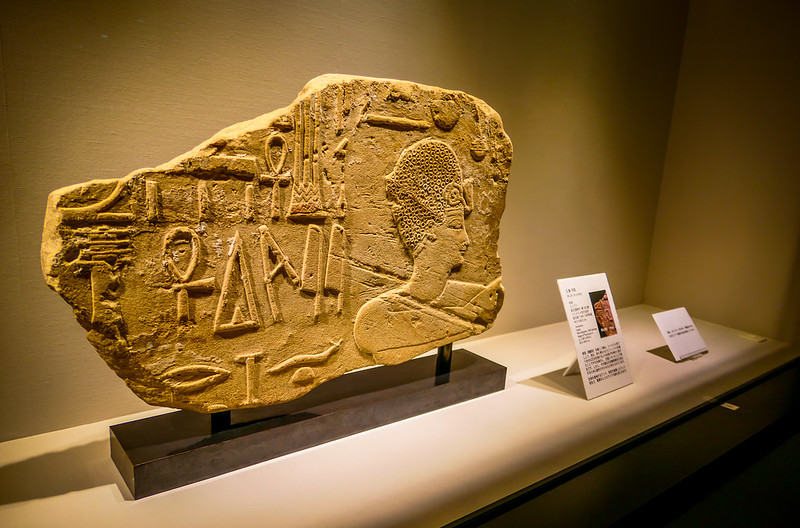
A lot of the ancient artifacts from ancient Egyptian structure and art were made of stone.
Limestone, Sandstone and different types of other stone, Egyptians at the time used what was available to them.
Among the ones featured at the Matsuoka Museum of Art in Minato is the “Relief of a King” made of sandstone during 18th Dynasty of Egypt during the New kingdom and reign of Thutmose IV (1399-1389 B.C.).
The New kingdom was during the time of the Egyptian Empire between 16th Century BC and 11th Century BC and Thutmose IV was the 8th Pharaoh of the 18th Dynasty of Egypt during 14th century BC.
Thutmose is best known for the restoration of the Sphinx at Giza, but despite ruling for ten years, not much is known about him and was referred to as the Conqueror of Syria but possibly his most well-known during his rule is marrying a Mitannian princess to forge a new alliance with Egypt’s former rival, Mitanni in order to protect their mutual interests from the threat of the Hittite Empire.
Also, known for commissioning the “Dream Stele” found between the paws of the Sphinx in Giza. According to Thutmose, when he was a younger prince, he rested under the head of the Sphinx, which was buried with sand. Supposedly, when he fell asleep, he saw in a dream in which the Sphinx told him to clear away the sand and if was restored, he would become the next Pharaoh. And it happened. It’s looked as a propaganda piece to legitimize Thutmose as a pharaoh.



While I’m not quite sure if the image is of Thutmose IV, it does look similar to the “Head of Thutmose IV wearing the blue crown” which is housed at the State Museum of Egyptian Art in Munich, Germany.
But even more of a similarity of the Thutmose IV wearing the khepresh, which can be seen at the Musee du Louvre.
But it’s a fascinating piece of art from ancient Egypt that one can find at the Matsuoka Museum of Art in Minato.
